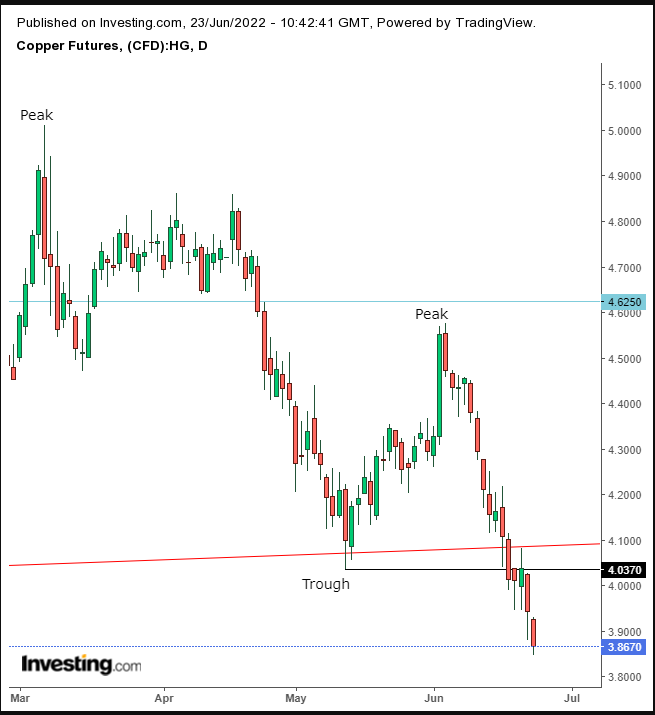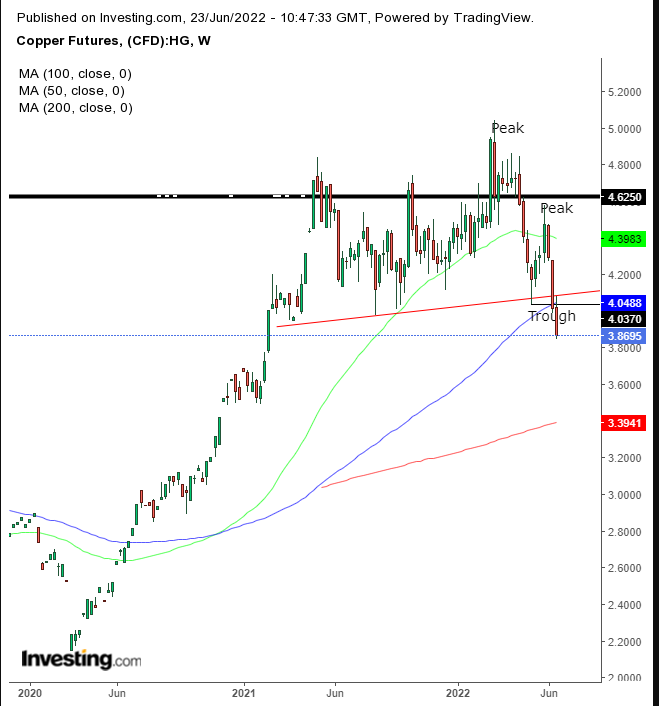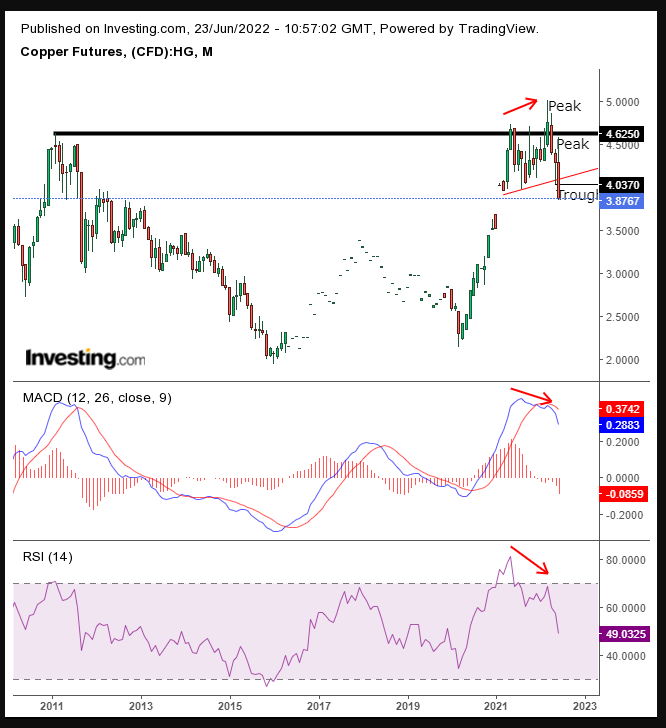Chart Of The Day: Copper Tops Out And Aims Much Lower
2022.06.23 15:40
Copper is down 2% today, extending the sell-off to its second day with a two-day loss of 4.3%.
However, losses are much deeper overall. The commodity has shed 15.1% since its June 2 high and is down 21.7% since its Mar. 4 record close, putting it in a bear market.
As more voices warn of a global recession, the metal continues to fall and recent coronavirus restrictions in China have exacerbated the sell-off. China is the world’s second-largest economy and the single largest global importer. As of 2020, it imported $48.55 billion worth of copper, while in second place, Germany imported just one-fifth of that.
The outlook for the red metal is so bleak that even a strike in Chile, the world’s largest copper producer, failed to stop the sell-off.
So, has copper fallen all it can, and is this a time to buy? While there could be a short-term bounce, copper prices are on a trajectory for further losses.
 Copper Daily
Copper Daily
Copper fell on Friday below its May 12 low, registering the second trough and establishing the minimum two peak and trough series to confirm a downtrend. Two sessions later, dip buyers attempted to push prices back up but found resistance by a mysterious red line. Let us zoom out and see what that’s all about.
 Copper Weekly
Copper Weekly
Now we understand the resistance. It was the neckline of a massive top since the May 2021 peak. We can see that the price fell below the 50-week MA in late April and retested at the end of May. Last week the price dug deeper, cutting through the 100 WMA, and is now eying the 200 WMA 12% lower.
But what is the thick black line?
 Copper Monthly
Copper Monthly
It is the previous all-time high, hit in February 2011.
Now, the puzzle is coming together. The last time prices reached this high, they more than halved. Will the same thing happen now?
The indicators confirm each other with a similar assessment on two levels. First, the simple interpretation is that they are down-trending, both the MACD, which addresses price comparisons, and the RSI, which measures momentum.
Second, a more elusive signal is the negative divergence—of both indicators representing different components of supply and demand—provided a negative split to the price. The most potent movement an indicator can provide is that the price was running on fumes, the telltales of a bubble.
Trading Strategies
should wait for the price to retest the top’s neckline before committing to a short position.
would wait for the same corrective rally for a better entry if not confirmed.
could enter a contrarian long if the price creates a base before joining the rest of the market with a short. Money management is key. Here is a generic example:
Trade Sample 1 – Aggressive Long Position
- Entry: $3.91 (if the price closes above this level)
- Stop-Loss: $3.90
- Risk: $0.01
- Target: $3.96
- Reward: $0.05
- Risk-Reward Ratio: 1:5
Trade Sample 2 – Moderate Short Position
- Entry: $3.96
- Stop-Loss: $4.01
- Risk: $0.05
- Target: $3.46
- Reward: $0.5
- Risk-Reward Ratio: 1:10
Trade Sample 3 – Aggressive Short Position If Copper Does Not Rally
- Entry: $3.85
- Stop-Loss: $3.86
- Risk: $0.01
- Target: $3.75
- Reward: $0.1
- Risk-Reward Ratio: 1:10








